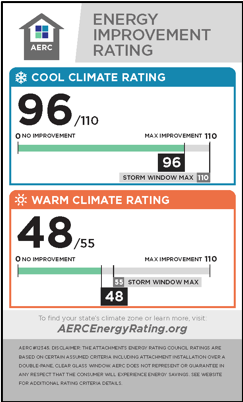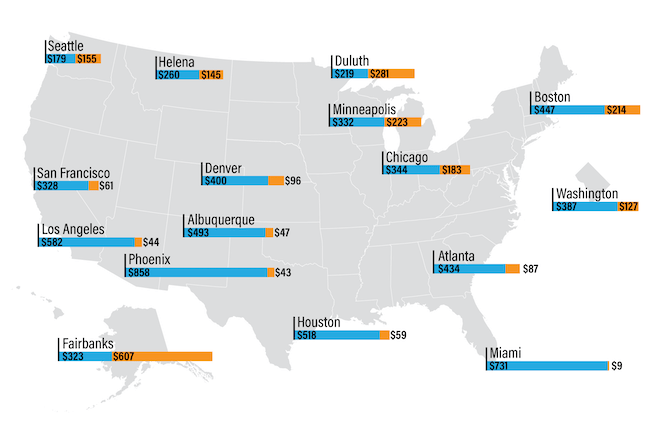In US stores this year, consumers will see a new label on window attachments, such as blinds and shades, that will help them find the product with the greatest energy savings for their climate. Whether installing storm windows to ward off drafts in the winter or closing blinds and shades to keep out hot summer sun, many consumers already use window attachments to help keep their homes comfortable. Shoppers understand that window attachments can improve comfort and reduce energy bills, but until now they haven’t had the information needed to compare these products and select the most energy-efficient styles. And without reliable data, computerized energy models are not able to estimate the contribution window coverings make to home energy performance.

AERC Label
As the latest brief in our Emerging Opportunities in Buildings series explains, the Attachments Energy Rating Council’s (AERC’s) new Energy Improvement Rating label is designed to fill that gap. Based on a product rating and certification program developed for AERC by Lawrence Berkeley National Lab, the label lets consumers compare expected energy savings for window attachments in warm and cool climates. Participating manufacturers have started to label products they offer for retail sale; labeling information is also available on the AERC website and from specialty dealers and interior designers.
The labels are already appearing in some stores. AERC and its members are working with big box home improvement stores and other retailers to educate sales staff and get their buy-in for in-store promotional materials. At this point, storm window manufacturers have been most active in labeling their products, but consumers should find labeled cellular shades and other decorative products in stores later this year.
Extensive research and modeling went into development of the AERC rating program. These studies demonstrate that window attachments are not created equal when it comes to energy efficiency. Shades, blinds, shutters, interior and exterior storm windows, and other window attachments can make a home more comfortable by blocking radiant heat loss to the coldest surfaces in a home: the windows. Products that incorporate improved materials, components, and design can reduce heating and cooling energy use by as much as 20% compared to a window without coverings.
Information from AERC’s rating and labeling program is designed to help more than just consumers. Utilities and other efficiency program administrators can use the information to design incentive programs for window attachments with the greatest potential savings in their climate.
The cumulative savings are impressive, in some places totaling hundreds of dollars per year. The map below shows estimated annual heating and cooling savings for a selection of cities across the country. A number of utilities are adding window attachments to their program portfolios. They are a popular product with lots of consumer appeal and a very large market; between 150 and 225 million window attachment products are shipped in the United States every year. These factors, combined with meaningful energy savings, make window attachments an attractive target for programs looking for new energy efficiency opportunities.

Potential residential heating and cooling cost savings from window attachment products. Source: AERC, Window Attachments: Utility Program Design Primer.
By increasing the visibility of efficiency ratings, such labels help educate customers about decreasing their energy consumption and carbon footprints.
Jennifer Amann is Buildings Program Director with the American Council for an Energy-Efficient Economy. This post originally appeared on their News & Blog.

